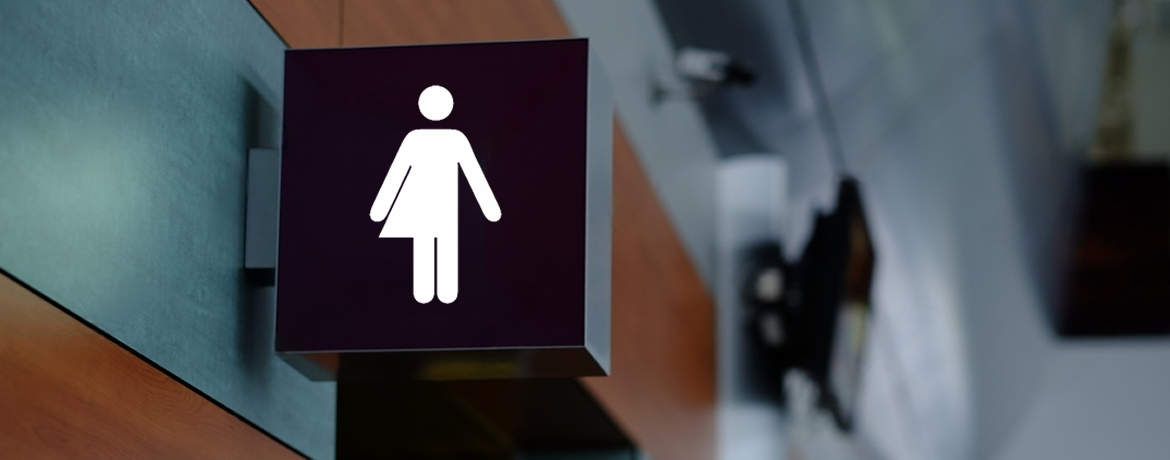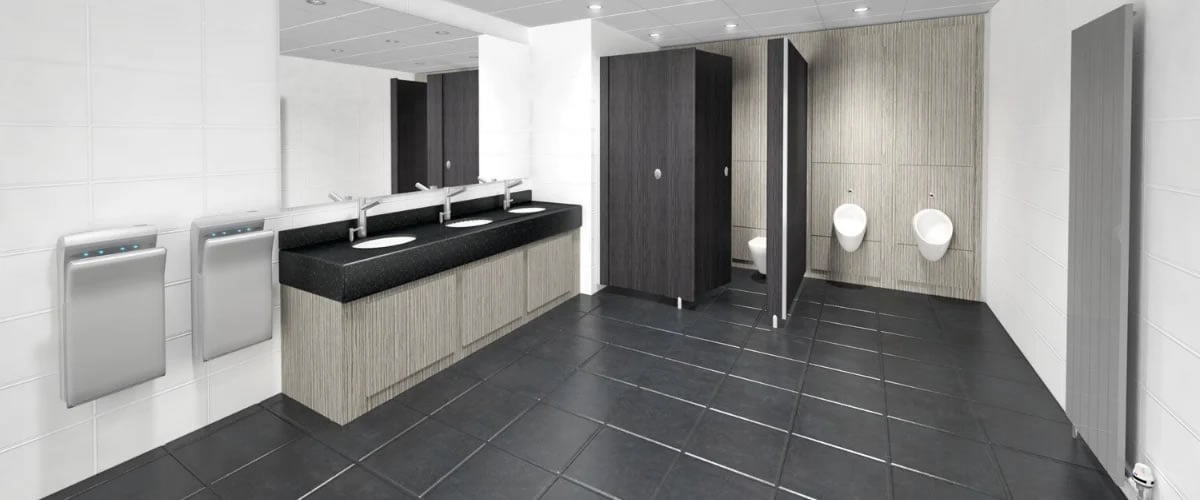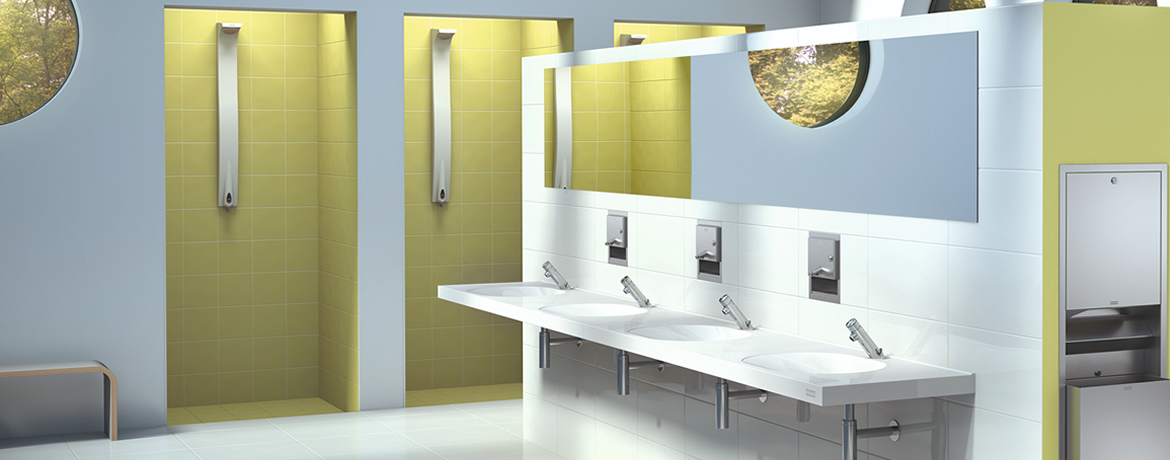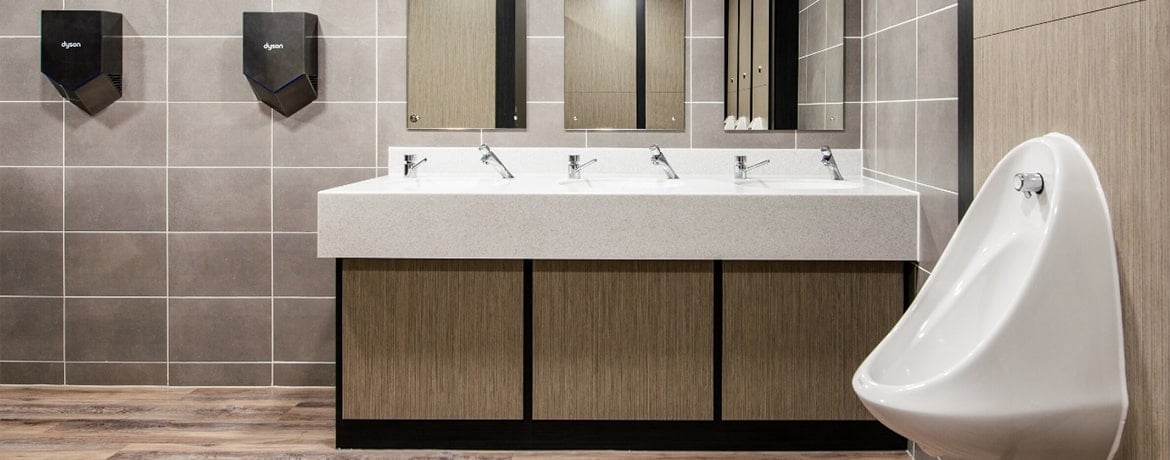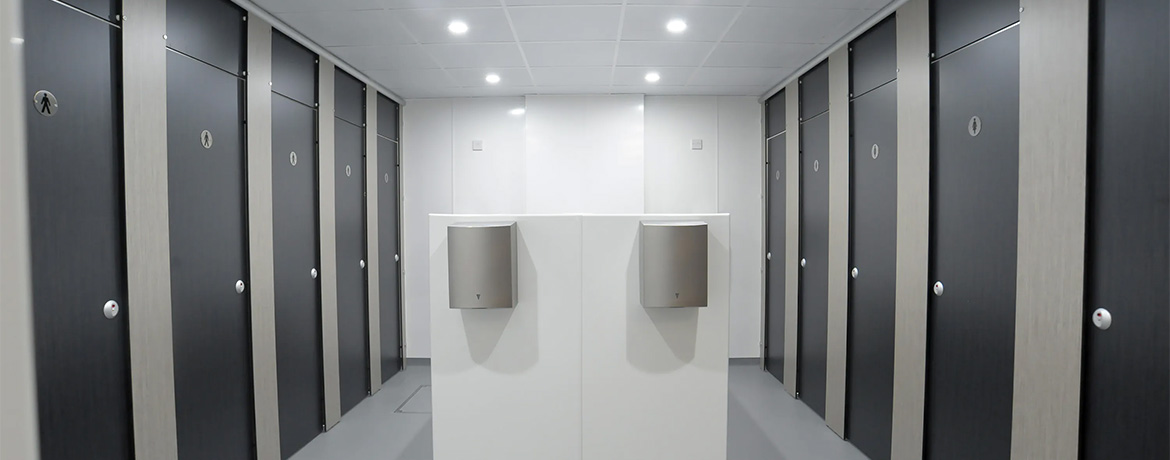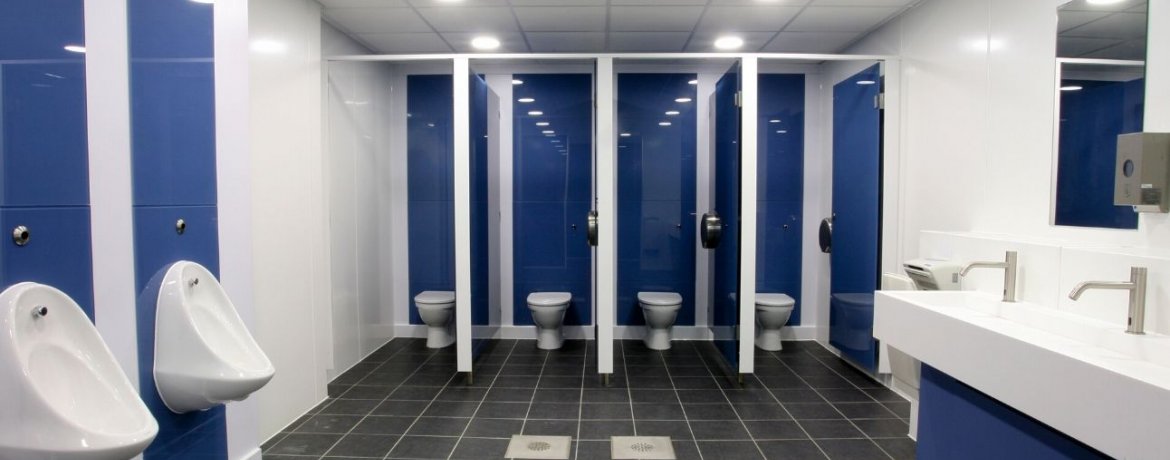Planning Hospitality Washrooms
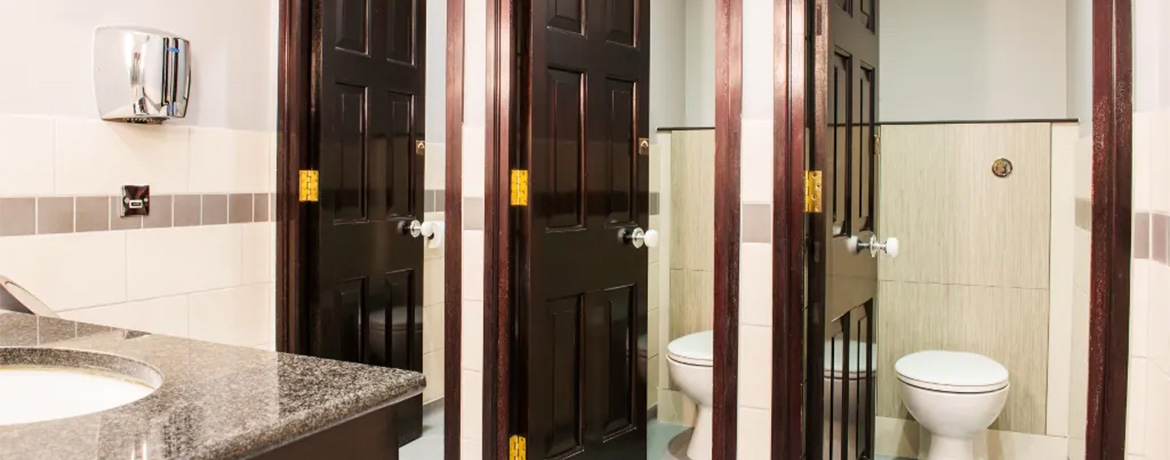
Washrooms in the hospitality industry are some of the most vibrant, interesting and welcoming out there. Some establishments will go for full-blown luxury and exuberance, a push to make sure you are impressed, welcomed and looked after in the very best possible way. Other businesses will make a push to show you something bold and dynamic. In no other type of business do you commonly see such attention to detail in the interior decoration.
The ambiance is followed through into the washrooms on all fronts in this sector. It’s well documented that people often judge a restaurant by their toilets. The meal could be flawless, but if you step into the bathroom and see it’s not well looked after, it leads a customer to ponder on the state of the kitchen and other areas they can't see too. On a more positive note, you also don't want your customers to step out of their contented, comfortable bubble when out with friends or loved ones. The experience you provide shouldn't be interrupted, which is why big players in the restaurant and hotel industry invest heavily in their commercial washrooms, often refurbishing them on a regular cycle.
Exposed pipework
Industrial design has grown in popularity over the past few years and stripping a space back to its original bare structure works very well. Exposed brickwork, conduits and ducting is now a common site in dining rooms and cafés, and this can follow through into the washroom too. Exposed original pipework looks great but in newer build sites, you can install your copper water pipes, directing them anywhere you choose before dropping them to a respectable hand height above the basins. In some cases, some restaurants have also chosen to use industrial stopcocks and levers in place of traditional taps.
Wash troughs
The wash trough has proved an incredibly popular choice in restaurant and hotel restrooms the world over. Having to install just one unit, instead of several individual basins makes maintenance and cleaning significantly easier and with just one waste pipe, blockages are easier to keep on top of. In large washrooms, some have chosen to stagger and tier their wash troughs so that they flow into one another, with the waste pipe located at the far end. This trickling water effect is a pleasant touch, that can set your washroom apart from others.
Salvage, reclaim & repurpose
You don’t always need to use off the shelf items, and in some circumstances, it can pay to salvage, reclaim or repurpose materials. Old bells are sometimes fashioned into small light fittings and where possible restored original features such as tiled floors can be made a focal point. Of course, you can bring a little balance to your washroom, for instance, you may require a ruggedly substantial safety flooring, but you can use reclaimed tiles for washbasin splashbacks, or even use old fashioned back to wall toilets where the cistern hangs on the wall above head height – a very popular choice in those establishments looking to make the most of the Victorian era styles and design.
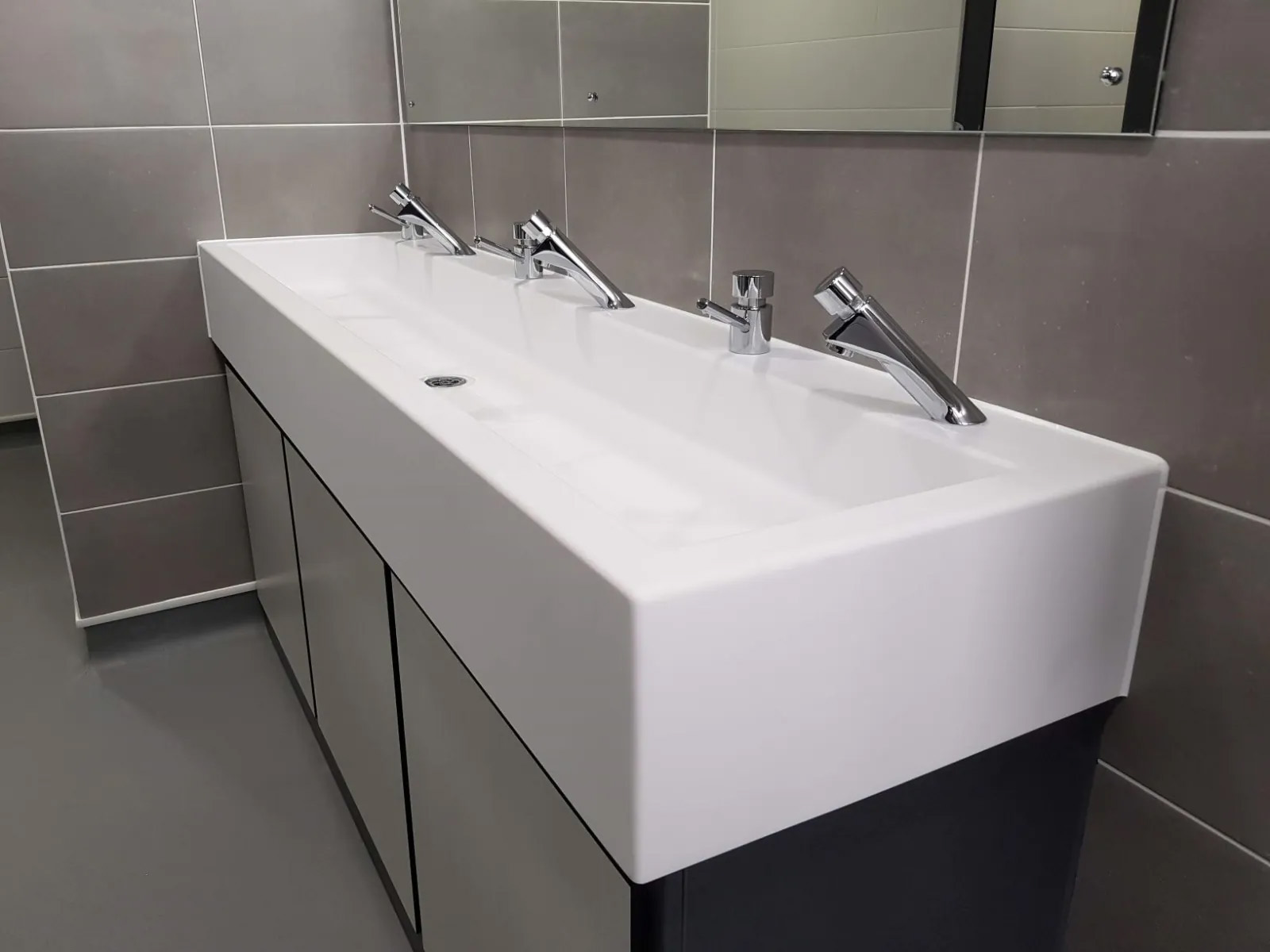

Communal wash area
British chicken restaurant chain Nando’s popularised the communal hand wash area with their oversized wash basin normally sited just outside the toilets. Serving as a prompt to wash hands is not only a great step in the right direction towards hygiene but also means their restaurants are protected that little bit more against sticky-fingered guests. But the communal wash area is also used extensively throughout the hospitality sector. Often male and female stalls are segregated but share a communal wash area. Making for simple monitoring and easy cleaning.
Attention to the ceiling pays off
The ceiling is an area often overlooked and one that plays an important role in interior design. In some cases, bold colour on the ceiling with pale ones on the wall can deliver a warming contrast and transform a cold, airy washroom into one that's welcoming and cosy. While we are on the subject of ceilings, be sure to consider lighting and more importantly ventilation, as this can be incorporated and hidden within your ceiling and works to remove damp and unwanted smells.
Hand soap - push the boat out
One of the fundamentals of restaurant washrooms is having great smelling hand soap. It may sound trivial, but this is the business or providing people with a good time, and we don't want to disrupt their mood. Hand soap is one of the easiest ways of ensuring guests leave the toilet smelling fresh and feeling good. Another great touch is playing music in the washrooms at a low volume, preferably the same music as in the dining room.
When space is an issue
Often, space can be a real issue in small restaurants and bars, but that doesn't mean you have to struggle with providing great facilities. Today, we have a number of space-saving solutions, designed with the micro washroom in mind. Here we want to look at using wall space and cutting down on anything unnecessary on the floor. Wall hung toilets leave the floor clear beneath them and give the impression of more space, so it’s a good idea to think about getting your waste bin off the floor and opting for a wall-hung one too, or better yet, trading up for a hand dryer.
Remember, in existing buildings, disabled washrooms aren’t a must, but you should make every effort possible to ensure the washroom is as accessible as possible. For ambulant washrooms, this means installing grab rails and having an outward opening door.
The restaurant washroom is one of the most creative washroom environments in the commercial world. Whilst you have some fundamentals and basics to adhere to, make sure to give these rooms the same care and attention to detail as you would your main dining room, your guests will thank you for it.
For further information on our washroom design and washroom refurbishment services please contact our experienced sales team.
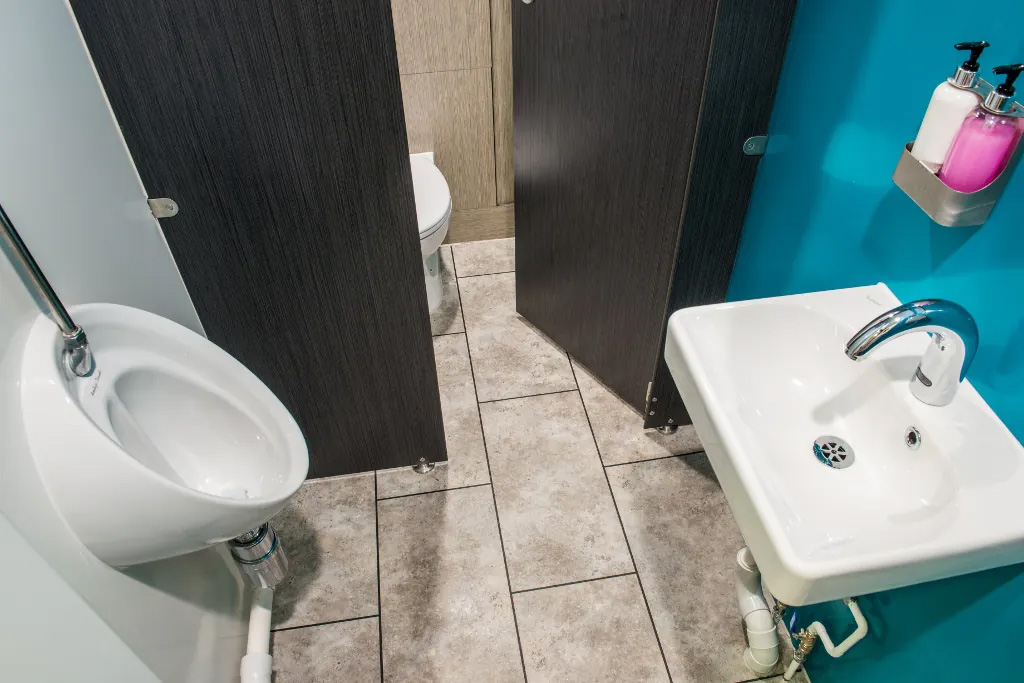

MORE TO EXPLORE IN Related Posts

Fast Dry Hand Dryer Stainless Steel

KWC DVS Stainless Steel Wall Mounted Waste Paper Bin
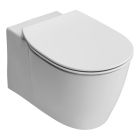
Ideal Standard Concept Wall Hung Toilet With Aquablade Technology
As low as £406.80 £339.00

Bespoke White Solid Surface Corian Box Wash Trough
As low as £780.00 £650.00

